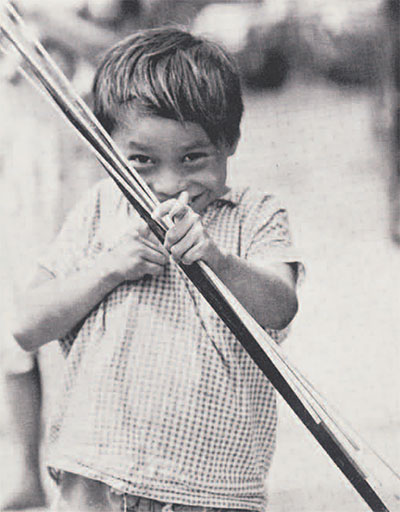
As we have learned from the archaeological record, the American Indian is derived primarily from inhabitants of northeast Asia who crossed into the New World sometime during the latter part of the Pleistocene. From our knowledge of the ecology of these early immigrants, we have learned that they and their ancestors had existed under arctic and sub-arctic conditions for thousands of generations and, like the living peoples of these northern regions, they had undoubtedly evolved adaptive mechanisms in response to the environmental stresses they encountered. Upon spreading southward in the western hemisphere they met warmer temperatures and more tropical environments and a new set of selective pressures replaced those which had operated upon earlier generations. Reaching one of the most inhospitable of all ecological zones, the tropical rainforest, perhaps as long as a thousand years ago, these Indians have remained in small isolated populations for the most part, coping with these pressures by means of a culture which has, to this day, remained relatively simple technologically.
As groups for bio-anthropological study, the Indians of tropical South America are valuable for several reasons. The new approaches to physical anthropology of the past twenty-five years, emphasizing a sounder scientific approach, have turned from mere description to the study of the mechanisms by which populations have adapted to their environmental situations. Indians of the South American tropics, being derived from arctic and sub-arctic peoples, evolved within their set of unique pressures independent of topical populations in Africa and Asia and offer investigators the opportunity to discover just how separate populations can adapt to meet generally similar conditions. Additionally, the various populations of the South American rainforest tend to have remained as separate breeding units because of geographical and cultural factors; such separation offers the chance to study the ways in which such small units evolve. In spite of the fact that man today exists largely in great population masses whose size can only be estimated, our species evolved in groups of just such size as are today found in the few remaining remote areas of the world. Finally, the study of the inheritance of traits in humans, still in its infancy despite the revolutionary discoveries of recent years, can be most fully realized in populations such as this. With the emphasis upon kinship of many primitive cultures and the limited sizes of many of them, genealogical records reveal that almost everyone is related to everyone else. Using these records, the traits under study can be traced from parent to offspring and the underlying genetic mechanisms determined in many cases.
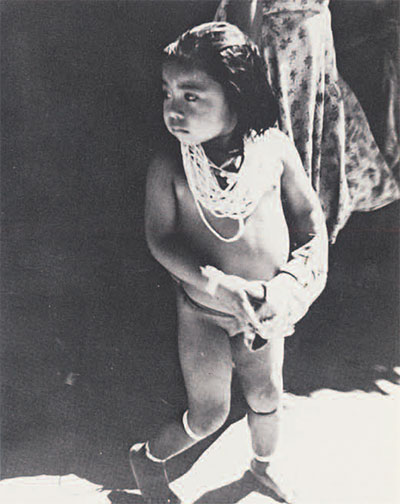
However, if reliable information is to be obtained, two conditions must be satisfied. First, the studies must cover as many aspects of the total population as is possible. The days of tracing an individual trait, such as skin color, throughout the world and drawing conclusions about its selective advantage, or lack or it, are over. Population and evolutionary biologists have shown many times that groups exist under unique sets of conditions, each one of which is important in determining the total adaptation. Almost all of these conditions must be understood for one to be able to draw conclusions concerning the progress of evolution in specific cases. In addition, alternate paths of evolution are frequently open and the one chosen sometimes seems to be dictated as much by chance factors as any other. For example, the greatest killer in the history of mankind has undoubtedly been malaria and the evolutionary development of characteristics which would confer some degree of resistance to it has been extensive. As far as we now know, this has largely involved selection of traits in the blood which make it difficult for the survival of the malaria parasite in the individual. The particular trait selected in specific areas of endemic malaria, however, has varied depending upon what mutations were available or what genetic viability was present in adjacent populations. In much of Africa, sickle-celled hemoglobin is such a trait. In populations which surround the eastern Mediterranean, we find Thalassemia. In southeast Asia, a hemoglobin variant called E is common, while the genes responsible for sickle-celled hemoglobin are again widespread in southern India. In many areas, combinations of the above are found, interacting in ways which permit population geneticists to predict future trends. Only by a thorough study of an individual population can its adaptive aspects be determined. As data accumulate on specific populations, we will be in a position to determine just how populations have evolved.
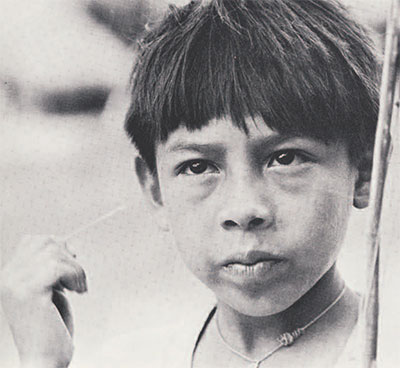
The second condition to be met is that such studies proceed rapidly. The spread of civilization and technologically advanced cultures into areas which were the preserve of indigenous peoples has resulted in cultural and genetic amalgamation. Not only does this mean that, in South America, European genes are being spread throughout the Indian populations, but that the barriers which previously separated the Indian groups from each other are breaking down. The spread of technologically higher cultural knowledge has lessened the impact of “natural” factors in the process of selection. Obviously, cold stress is not nearly so important where people can both don heavier clothes and adjust thermostats. In recent years, therefore, there has been an increasing emphasis upon the study of genetically “pure” groups in South America and Melanesia, the last two areas of the world where such peoples remain.
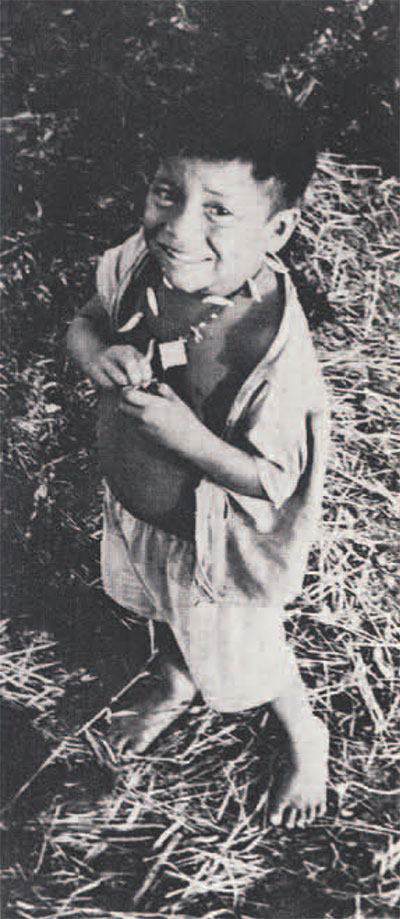
Such a study was recently carried out under the auspices of the University Museum and with the assistance of the Sumner Institute of Linguistics, the DuPont Company Haskell Laboratories, the Institute for Cancer Research of Philadelphia, and the New York Blood Center. Travelling into the South American rainforest, we gathered data on the Cashinahua Indians of southeastern Peru, described in a previous number of Expedition. These Indians, existing in one of the very remote areas of the jungle, have had no systematic contact with Europeans, except for cultural and linguistic studies by Mr. Kenneth Kensinger of the University of Pennsylvania and previously of the S.I.L.. An occasional trader visits them, as have some missionaries.
Although severely limited in the weight of equipment that we could fly in, we nevertheless were able to gather a large amount of genetic and bio-anthropological information on a group of some 210 Indians with no discernible intermixture with Europeans and probably an insignificant amount, at least in recent years, with any surrounding tribes. We took samples of blood, saliva, and urine, head and hand-wrist X-rays, anthropometric measurements, dental observations, finger and palm prints, and other genetic data on this group, more than 95% of all individuals related to each other through either descent or marriage. The total amount of data obtained can be better appreciated when it is realized that each kind will yield many separate bits of information. Thus, the blood (a minimum of 27 cc. from each participant)will be analyzed to determine the presence of some twenty-five separate factors. The X-rays will yield information on growth and age changes in the head and face and the bones of the hand and wrist (which effectively mirror the rest of the skeleton) as well as the deposition and loss of calcium (and, hence, bone) in the body. The anthropometric measurements will not only tell us of their size and proportion but also of the varying amounts of fat and muscle present in the age and sex groups, important in a geographical area where the advantage in carrying around a store of energy is offset by the workload imposed due to the temperature and humidity.
As the accompanying photographs show, the Cashinahua are physiognomically a most interesting people and certainly fail to resemble the stereotype of the South American Indian. Rather than argue for any uniqueness in the Cashinahua face, this simply means that our stereotypes might not accurately reflect the range of variation found in many of the less well studied areas of the rainforest. In any event, many of them look extremely Mongoloid, although by this is meant the less severe features of the southeast Asian rather than the extreme Mongoloid of parts of China. The internal epicanthic eye fold, found in Asiatic peoples generally, is common and often pronounced among the Cashinahua. Such extreme shovelling is rivalled among American Indians only by groups such as the Pima and Papago of the southwestern United States. Another feature of their dentitions is a twisting of the upper central incisors so that the surfaces that touch each other are rotated inward toward the tongue. This is not seen among American whites or Negroes, being characteristic of Mongoloids and American Indians, and is found with a higher than usual frequency among the Cashinahua.
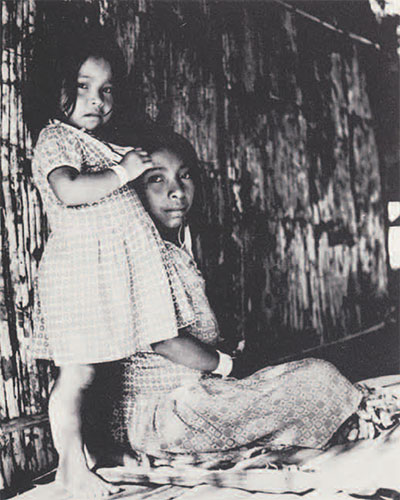
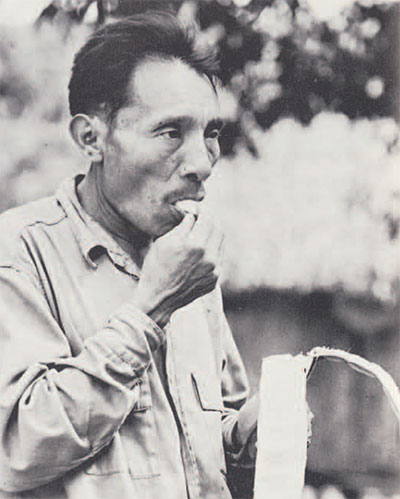
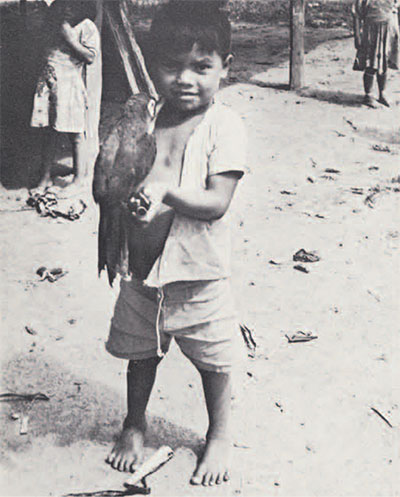
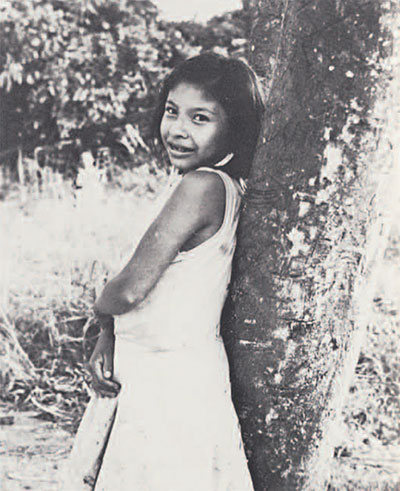
Throughout the world, peoples of the tropical rainforest are short. It is generally accepted that such shortness is a better adaptation to wet heat through a reduction in the absolute amount of body heat produced and a more effective loss of the heat that is generated. However, it has also been noted that the tropics are nutritionally one of the poorest areas of the world; this situation being complicated by parasites, fungi, and diseases. Perhaps rainforest-dwellers are short due to a combination of the above factors, but, whatever the case, the Cashinahua conform to the pattern. Males average in the neighborhood of 63-64 inches, with females tending to be about an even five feet. We towered over them, with no Indian taller than five feet six.
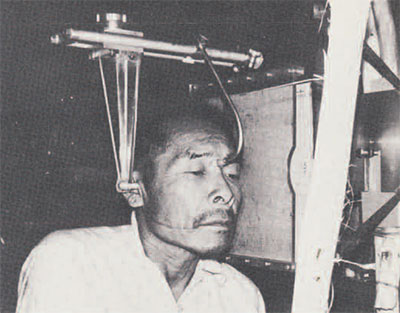
The percentage of body weight which is fat is an important area for study. Most of one’s fat occurs subcutaneously as a blanket, covering practically the entire body, though with varying thickness; thus, there is more fat over the hips than the forearms. From what we know of modern peoples, significant patterns of variation in the amount and location of body fat occur. Adult females have about twice as much fat as adult males (in American whites, about 27-28% of a woman’s weight is fat). This sex difference is initiated at puberty, when males actually lose fat while females continue to gain. From a theoretical standpoint, a thicker layer of body fat and the temperature to which a group is exposed. However, this relationship, not so strong as expected anyway, is confounded by the fact that caloric excess is stored as fat and, therefore, we find that the greatest amounts of fat occur, not among the arctic-dwelling Eskimos, but among the 3,500 calories-per-day American whites. The distribution of fat among the Cashinahua is as yet incompletely analyzed, but some increasing aspects emerge. As expected, the hard-working males do not have as much fat as do Americans; but, on the other hand, the females, who also work harder than their American counterparts, are fatter and carry much more than one would predict for people who dwell under conditions of year-round heat and humidity. To the Cashinahua, a fat woman is a beautiful woman; however, it seems difficult, at our present stage of knowledge, to ascribe to social selection the exclusive maintenance of so much adipose tissue. Though their diets are adequate in most cases, they are certainly not as lush as ours, so that caloric intake does not seem to furnish an answer. Our inability to answer these questions reflects our lack of knowledge about the amounts of fat carried about by primitive peoples of the world and shows the inadequacies of conclusions based only on civilized groups, thereby pointing out the need for studies of indigenous peoples before they become unalterably mixed genetically.
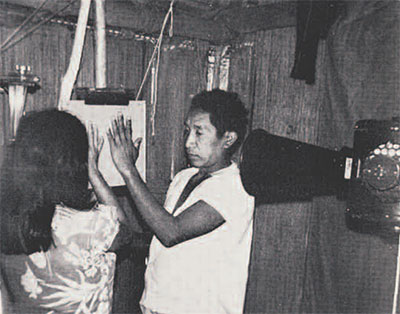
Some of the frequencies of genes in the Cashinahua are quite different from those of Europeans and even Negro populations. Whether this represents a simple lack of knowledge of non-white frequencies, or whether this is related to specific selective pressures in the Cashinahua environment is still unknown. Again, the answer probably rests in a combination of both; the more genetic systems we investigate on a world-wide basis, the more variability we find. And as the meaning of the variability is investigated the nature of environmental stress and its role in producing the variability become better understood.
One of the divergent gene frequencies of the Cashinahua involves the occurrence of a gene which determines one of the antigens of the blood. An antigen is a substance which will stimulate the formation of a specific antibody. This particular antigen, known for only a few years, is called the Australia antigen, reflecting the locality of its discovery. In most peoples of the world so far tested this antigen occurs only in a small percentage. Among the Cashinahua, the gene is found in about twenty percent of them, one of the highest known proportions in the world. Such a system, for anthropological purposes, becomes an excellent “marker gene” for determining the degree of relationship between populations. It is also quite possible that some relationship exists between the Australia antigen and the inherited susceptibility to certain diseases, as is the case for other systems. This can be illustrated by the ABO system, long of value to bio-anthropologists in the evaluation of connections between groups. In addition, it is now firmly established that a relationship exists between certain of these blood groups and disease: blood group O predisposes people to duodenal ulcers and blood group A to pernicious anemia. There also may be relationships to diseases such as smallpox and plague but more evidence is needed to establish it.
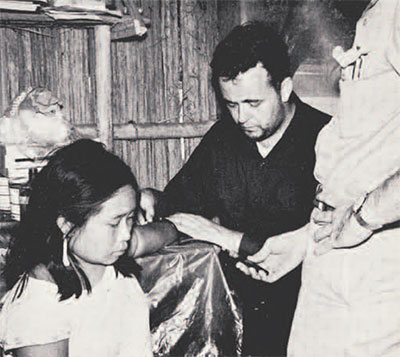
The Cashinahua also seem to be unique, at our present level of knowledge, with regard to a rather curious trait. Among American whites and Negroes, about two-thirds of them have the ability to roll their tongues longitudinally, an ability which seems to be genetically determined. Among the Cashinahua, less than four percent or one in twenty-five could perform this task. Our data will serve two purposes: first, the genealogies, when examined with respect to this trait, will perhaps allow us to conclude whether or not it is really inherited and, if it is, whether by a simple genetic mechanism. If it does appear to be inherited, then this study will contribute information on its distribution in various areas of the world. Further analysis may establish some selective advantage, or disadvantage, a not-so-ridiculous proposition in view of some of the relationships recently established.
One genetic system in which the Cashinahua resemble other South American Indians is in the ability to taste a substance called phenylthiocarbamide, abbreviated PTC. Such an ability is inherited, non-tasters being unable to discriminate anything and tasters usually finding the substance quite bitter. All of the Cashinahua proved to be tasters, as is usually the case among unmixed South American Indians. This particular system is an interesting one since it is by now well-established that there are, among individuals with certain kinds of goiter, more non-tasters of PTC than would be expected. As an aside, no cases of goiter were observed among the Cashinahua.
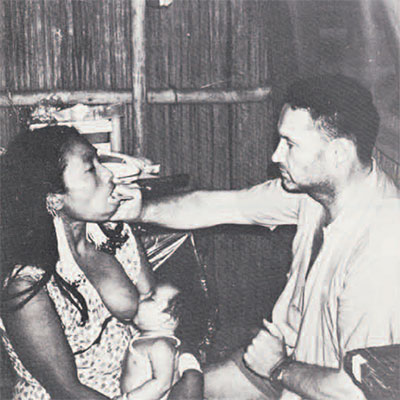
Other parts of the study remain to be completed. The physical growth of the children is delayed in the tropics. Cashinahua children are small and delayed in their rates of maturation, relative to American whites, as evidenced by a menarcheal age of around 15-16 for the girls. Again, is this due to the delaying effects of their harsh environment or to an inherited rate of growth which is slower than that found among other populations?
The study of calcium storage and eventual bone loss, as measured conveniently on the hand-wrist X-rays, is currently going on. It has been shown that whites, Negroes, Hong Kong Chinese, and Central American Indians all undergo bone loss from about 40 years of age, the loss being greatest in post-menopausal females. However, the amount lost is a function of the amount at the beginning and this has been shown to be controlled as much by genetic factors as by extrinsic ones, such as the daily calcium intake. Thus, Guatemalan children with kwashiorkor, the disease of inadequate protein intake, show bone loss, but still remain closer to healthy Guatemalan children to whom they are genetically related than to non-Indians who also have kwashiorkor. The data from the Cashinahua will serve to provide data from a part of the world yet unknown as regards this important parameter.

The analysis of the finger and palm prints, though extremely tedious, will be of value in relating the Cashinahua to other groups. Again inherited, although by complex and yet undetermined mechanisms, dermatoglyphics are of significant anthropological importance in relating populations to each other and our data will again fill in a poorly known area of the world. Though no one has yet demonstrated conclusively any direct relationship between these prints and natural selection, it is well known that dermatoglyphic patterns are an important diagnostic aid in several genetic syndromes such as Mongolism (Down’s Syndrome) and are also associated with certain forms of mental deficiency.
The final and perhaps most important aspect of this study of the Cashinahua will come with the integration of all of these data into a unified whole, presenting a picture of a single population isolate. Who are the Cashinahua? We know that, in some ways, they are quite similar to other South American Indians but, in other ways, they differ markedly. Are these differences due to the effets of natural selection or to the simple fact that they trace their ancestry back to a very few individuals (the “founder” effect)? Through this study we hope not only to learn of a specific group and how it is adapted to its own particular environment, but how it evolved and how this knowledge can be extended to they ways in which populations have, in the past, developed.
